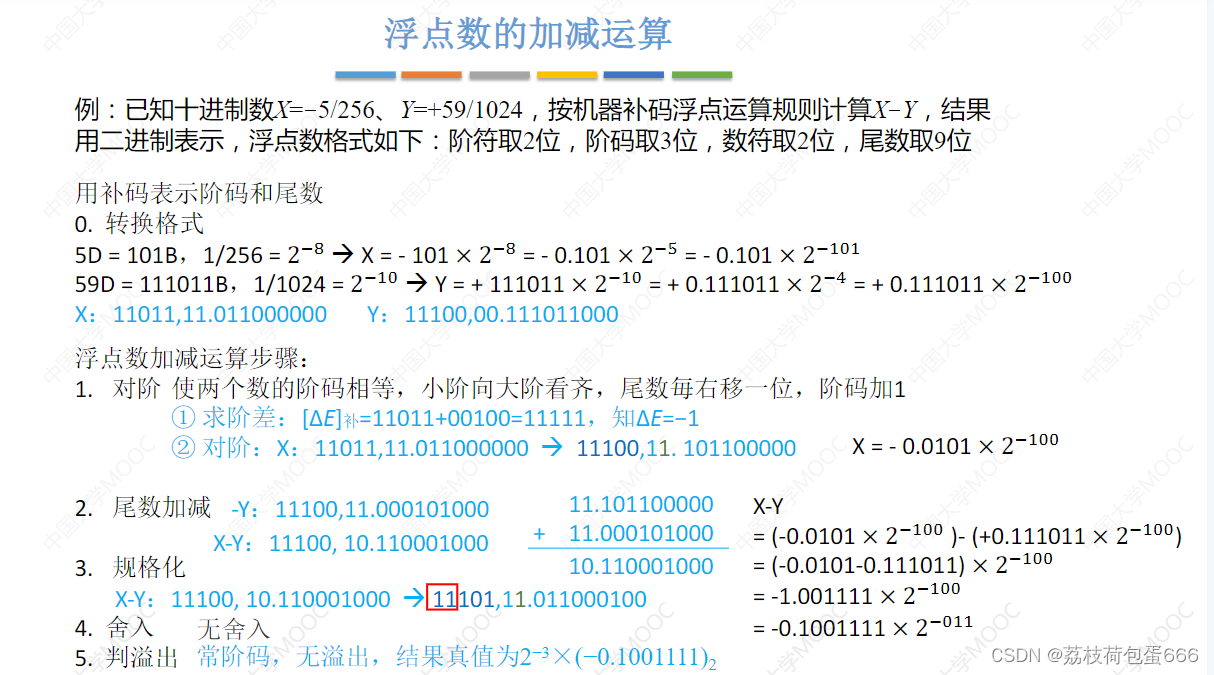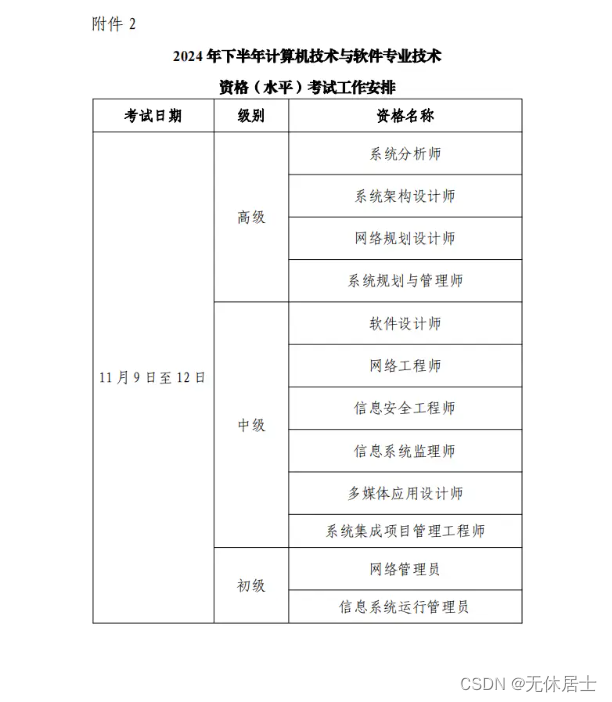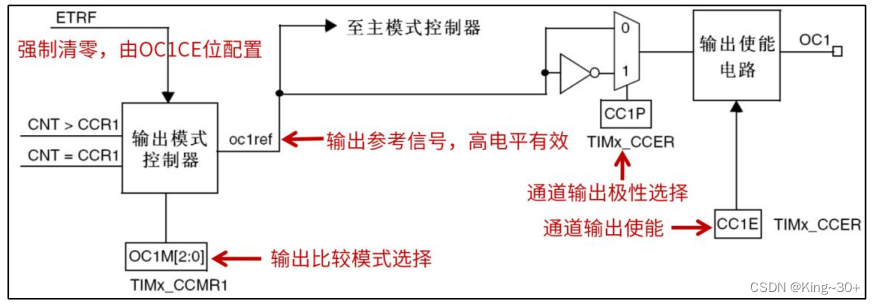文章目录
- 图的基本概念
- 邻接矩阵
- 邻接表
- 图的遍历
- BFS
- DFS
图的基本概念
图是由顶点集合及顶点间的关系组成的一种数据结构
顶点和边:图中结点称为顶点
权值:边附带的数据信息
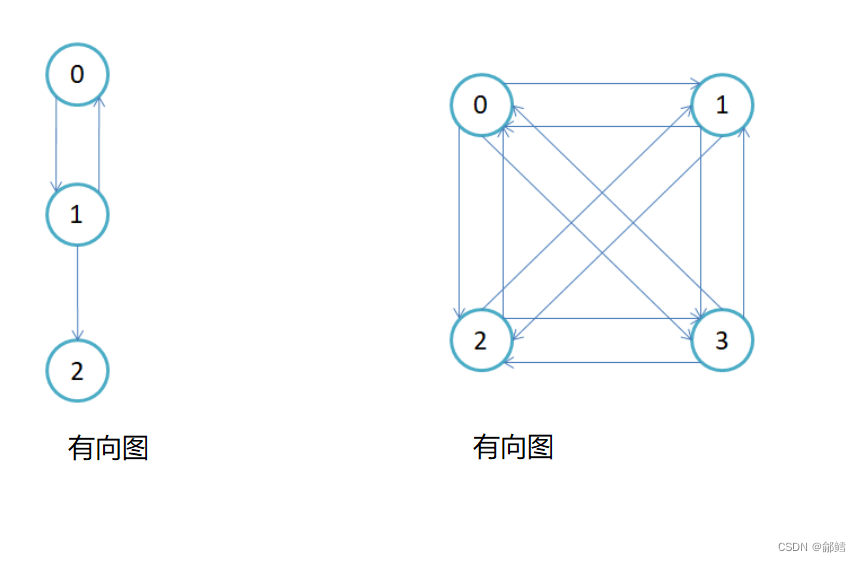
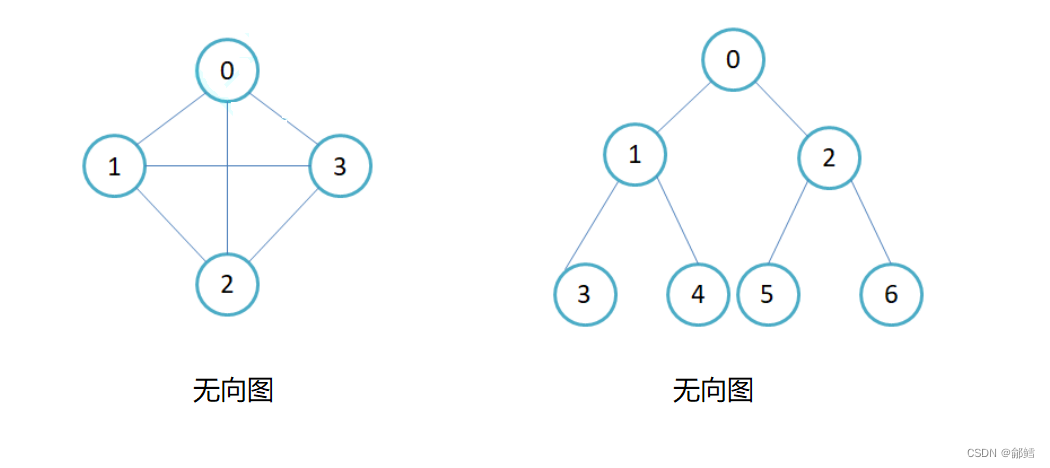
路径 : 
简单路径 和 回路: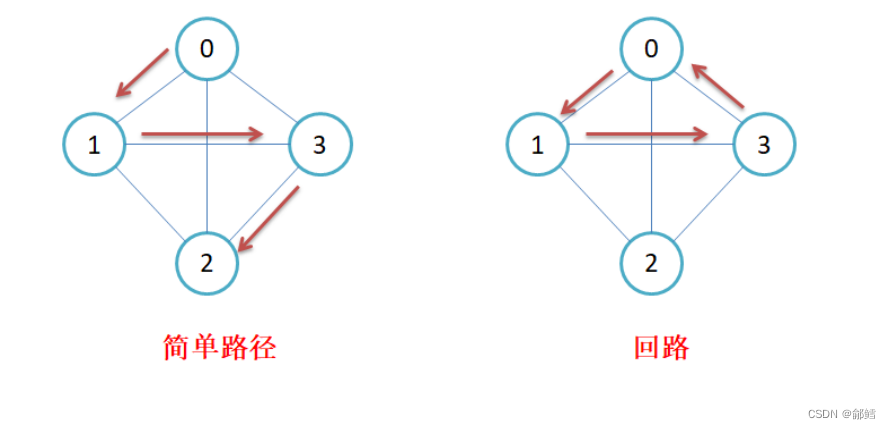
子图:设图G = {V, E}和图G1 = {V1,E1},若V1属于V且E1属于E,则称G1是G的子图
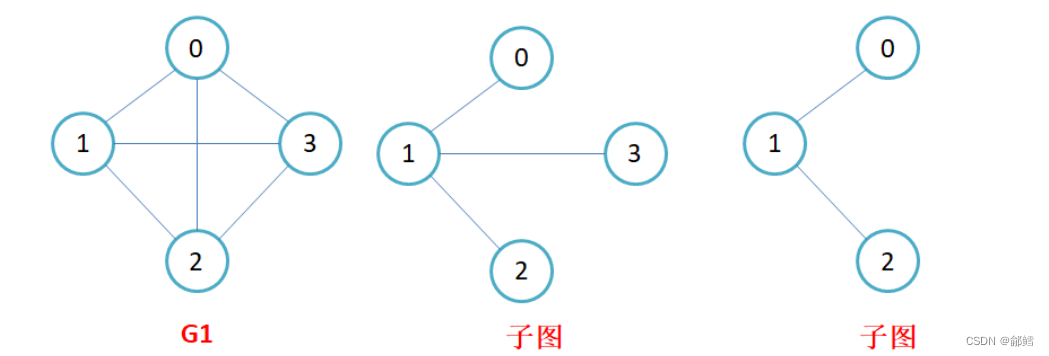
连通图:在无向图中,若从顶点v1到顶点v2有路径,则称顶点v1与顶点v2是连通的。如果图中任意一对顶点都是连通的,则称此图为连通图
生成树:一个连通图的最小连通子图称作该图的生成树。有n个顶点的连通图的生成树有n个顶点和n-1条边
生成树就是用最少的边连通起来
最小生成树:构成生成树这些边加起来权值是最小的。
顶点的度:
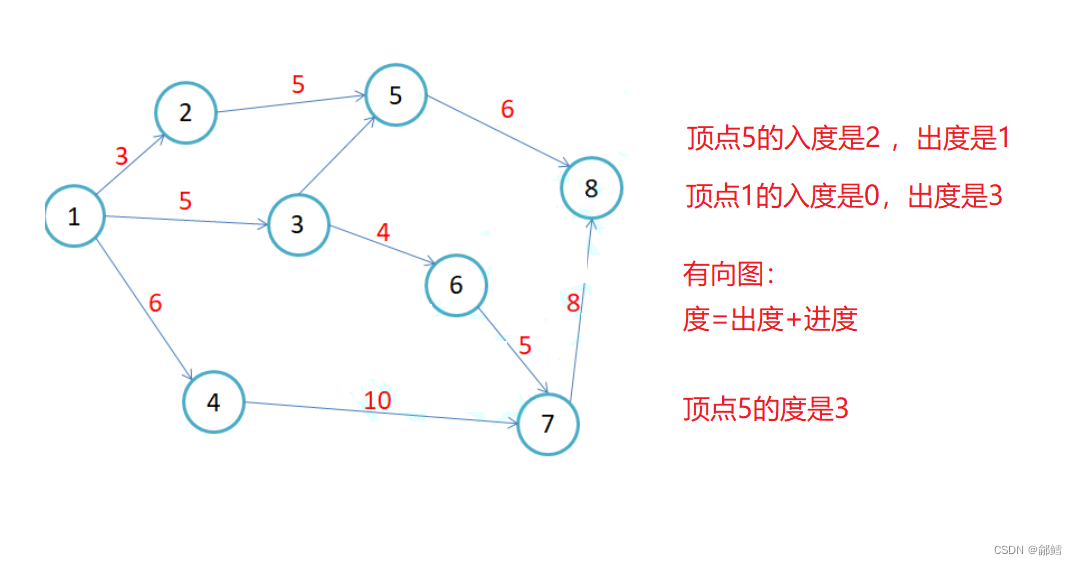
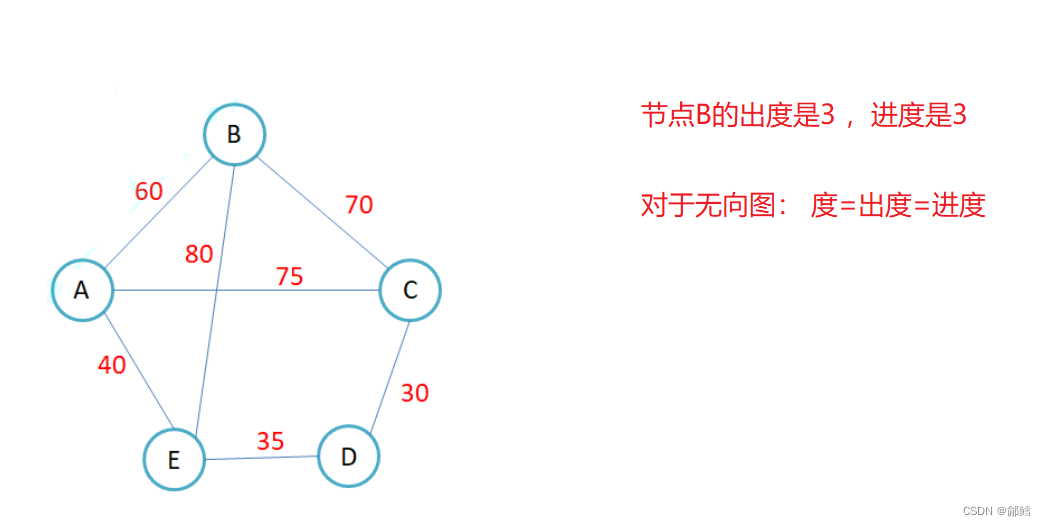
邻接矩阵
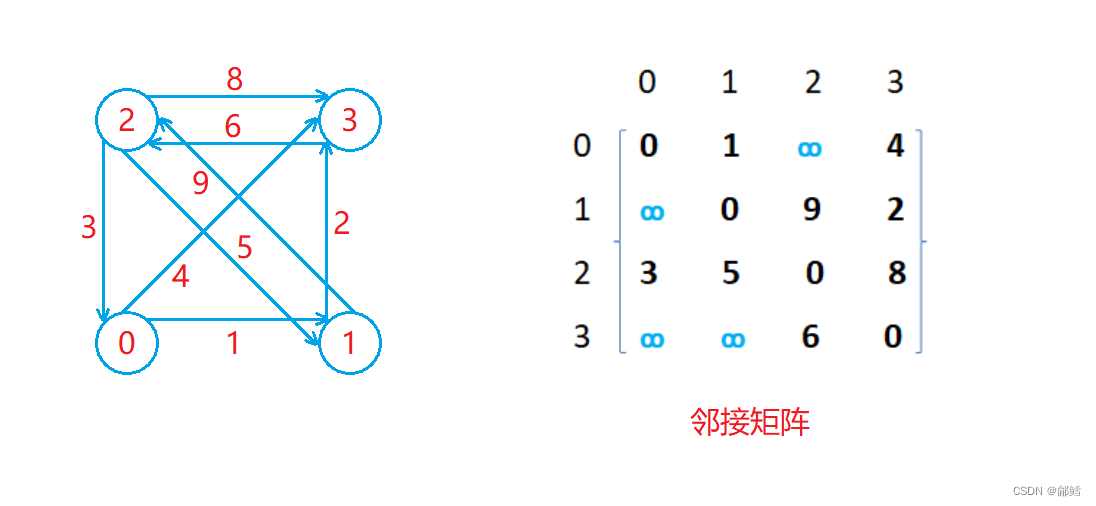
#pragma once
#include<map>
#include<vector>
#include<algorithm>
#include<assert.h>
#include<string>
#include <functional>
#include<iostream>
using namespace std;
//矩阵
namespace matrix
{//V是顶点 ,W是 weight 权值 template <class V, class W, W MAX_W = INT_MAX, bool Direction = false> //true是有向图 ,false是无向图class Graph{public://手动添加边Graph(const V* a, size_t n) //用指针数组 存储顶点{_vertex.reserve(n);//初始化顶点和边for (size_t i = 0; i < n; i++){_vertex.push_back(a[i]);_indexMap[a[i]] = i; //通过顶点找下标}_matrix.resize(n);for (size_t i = 0; i < n; i++){//将邻接矩阵的权值设置为最大值_matrix[i].resize(n, MAX_W);}}size_t GetVertexIndexMap(const V& v){auto it = _indexMap.find(v);if (it != _indexMap.end()){return it->second;}else //没有找到 {assert(false);return -1;}}void AddEdge(const V& src, const V& dst, const W& w){int srci = GetVertexIndexMap(src);int dsti = GetVertexIndexMap(dst);_matrix[srci][dsti] = w;//无向图 if (Direction == false){_matrix[srci][dsti] = w;_matrix[dsti][srci] = w;}}void Print(){//顶点 for (int i = 0; i < _vertex.size(); i++){cout << "[" << i << "]" << "->" << _vertex[i] << endl;}//矩阵 cout << endl;//打印横下标cout << " ";for (size_t i = 0; i < _vertex.size(); i++){cout << i << " ";}cout << endl;for (int i = 0; i < _matrix.size(); i++){cout << i << " ";//打印竖下标for (int j = 0; j < _matrix[0].size(); j++){if (_matrix[i][j] == MAX_W){cout << "*"<<" ";}else{cout << _matrix[i][j] <<" ";}}cout << endl;}}public:vector<V> _vertex; //顶点集合 map<V, int> _indexMap; //顶点映射下标 vector< vector<W> > _matrix; //邻接矩阵};void TestGraph(){Graph<char, int, INT_MAX, true> g("0123", 4);g.AddEdge('0', '1', 1);g.AddEdge('0', '3', 4);g.AddEdge('1', '3', 2);g.AddEdge('1', '2', 9);g.AddEdge('2', '3', 8);g.AddEdge('2', '1', 5);g.AddEdge('2', '0', 3);g.AddEdge('3', '2', 6);g.Print();}
}邻接表
邻接表:使用数组表示顶点的集合,使用链表表示边的关系
出边表:存储从各个顶点连接出去的边,出边表中下标为 i的位置存储的是从编号为i的顶点连接出去的边
入边表:存储连接到各个顶点的边,入边表中下标为i的位置存储的是连接到编号为 i的顶点的边
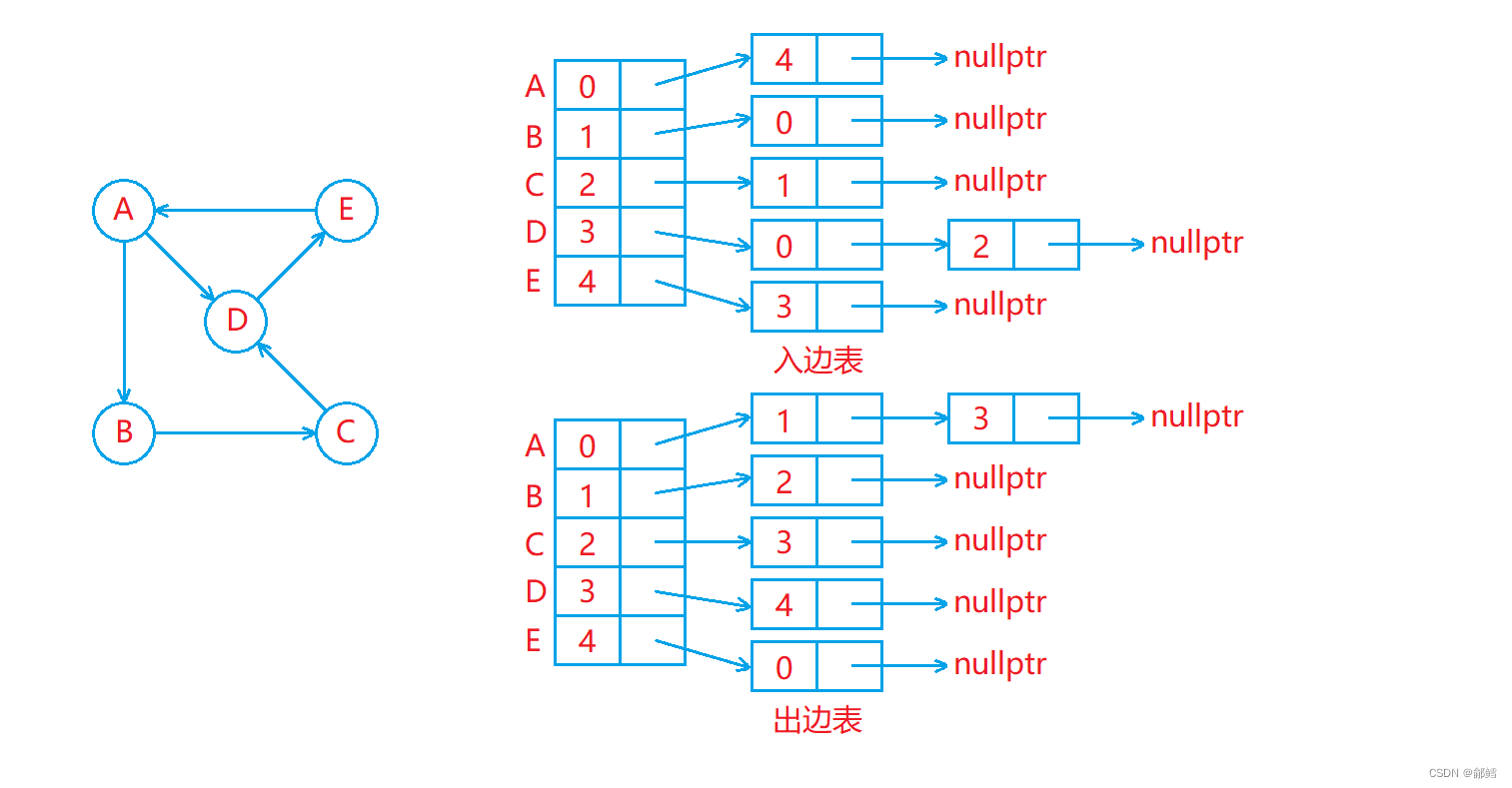
出边表和入边表的其中每个位置存储的都是一个链表
出边表中下标为i的位置表示从编号为i的顶点连接出去的边
入边表中下标为i 的位置表示连接到编号为i 的顶点的边
在实现邻接表时,一般只需要用一个出边表来存储从各个顶点连接出去的边即可,因为大多数情况下都是需要从一个顶点出发找与其相连的其他顶点,所以一般不需要存储入边表
//邻接表
namespace link_table
{template<class W>struct Edge{int _dsti;//目标点的下标 W _w;//权值Edge<W> *_next; //用链表表示边的关系Edge(int dsti, const W& w):_dsti(dsti), _w(w), _next(nullptr) {}};//V是顶点 ,W是 weight 权值 template <class V, class W, bool Direction = false> //true是有向图 ,false是无向图class Graph{public:typedef Edge<W> Edge;//手动添加边Graph(const V* a, size_t n) //用指针数组 存储顶点{_vertex.reserve(n);//初始化顶点和边for (size_t i = 0; i < n; i++){_vertex.push_back(a[i]);_indexMap[a[i]] = i; //通过顶点找下标}_table.resize(n, nullptr);}size_t GetVertexIndexMap(const V& v){auto it = _indexMap.find(v);if (it != _indexMap.end()){return it->second;}else //没有找到 {assert(false);return -1;}}void AddEdge(const V& src, const V& dst, const W& w){int srci = GetVertexIndexMap(src); int dsti = GetVertexIndexMap(dst);//头插Edge *eg = new Edge(dsti,w);//有向图 //添加从源顶点到目标顶点的边eg->_next = _table[srci];_table[srci] = eg;//无向图 //添加从目标顶点到源顶点的边if (Direction == false){//????Edge* eg = new Edge(srci, w);eg->_next = _table[dsti];_table[dsti] = eg;}}void Print(){//顶点 for (int i = 0; i < _vertex.size(); i++){cout << "[" << i << "]" << "->" << _vertex[i] << endl;}cout << endl;//遍历顶点for (size_t i = 0; i < _vertex.size(); i++){cout << _vertex[i] << endl;}//遍历邻接表的目标点的下标和权值 for (size_t i = 0; i < _table.size(); i++){cout << _vertex[i] << "[" << i << "]->";Edge * cur = _table[i];while (cur != nullptr){cout << "[" << _vertex[cur->_dsti] << ":" << cur->_dsti << ":" << cur->_w << "]->";cur = cur->_next;}cout << "nullptr" << endl;}}public:vector<V> _vertex; //顶点集合 map<V, int> _indexMap; //顶点映射下标 vector< Edge*> _table; //邻接表};void TestGraph(){string a[] = { "张三", "李四", "王五", "赵六" };Graph<string, int, true> g1(a, 4);g1.AddEdge("张三", "李四", 100);g1.AddEdge("张三", "王五", 200);g1.AddEdge("王五", "赵六", 30);g1.Print();}
}
图的遍历
BFS

void BFS(const V& src) //遍历顶点,通过下标找顶点{size_t srci = GetVertexIndexMap(src);queue<int> q;vector<bool> v(_vertex.size(), false); //防止走重复的路q.push(srci);v[srci] = true;while (!q.empty()){int front = q.front();q.pop();cout << _vertex[front] << endl;// 把front顶点的邻接顶点的下标入队列for (size_t i = 0; i < _vertex.size(); i++){if (_matrix[front][i] != MAX_W && v[i] == false){q.push(i);v[i] = true;}}}}
DFS
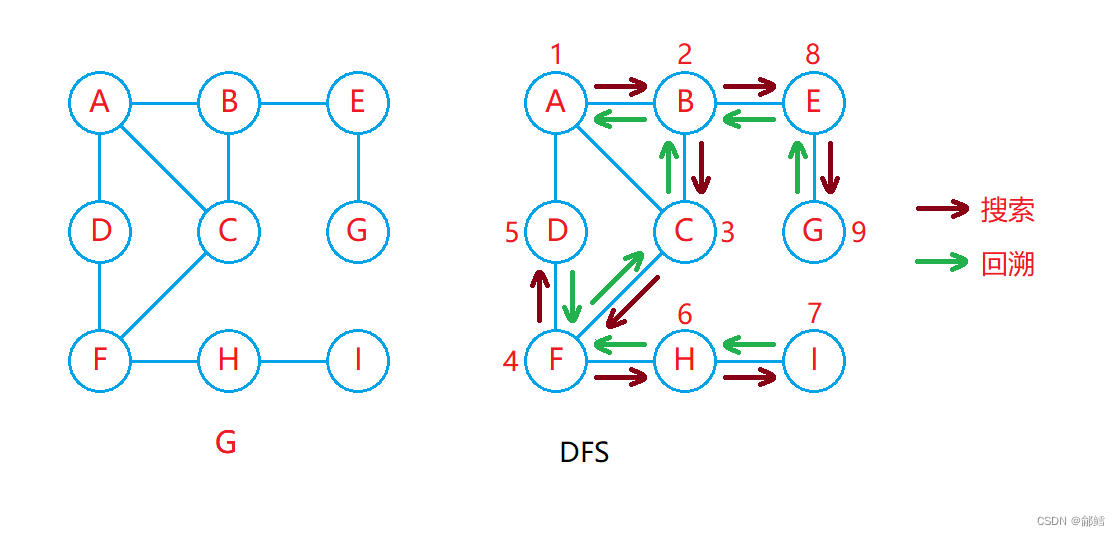
void _DFS( size_t srci ,vector<bool> & v){cout << srci << ":" << _vertex[srci] << endl;v[srci] = true;// 找一个srci相邻的没有访问过的点,去往深度遍历for (int i =0 ; i< _vertex.size() ; i++ ){if (v[i] ==false && _matrix[srci][i] != MAX_W){_DFS(i ,v);}}}void DFS(const V& src) //遍历顶点,通过下标找顶点{vector<bool> v(_vertex.size(), false); //防止走重复的路size_t srci = GetVertexIndexMap(src);_DFS(srci, v);}
完整测试代码
#pragma once
#include<map>
#include<vector>
#include<algorithm>
#include<assert.h>
#include<string>
#include <functional>
#include<iostream>
#include<queue>
using namespace std;
//矩阵
namespace matrix
{//V是顶点 ,W是 weight 权值 //连通的,边的关系就用权值代替,如果两顶点不通,则使用无穷大代替template <class V, class W, W MAX_W = INT_MAX, bool Direction = false> //true是有向图 ,false是无向图class Graph{public://手动添加边Graph(const V* a, size_t n) //用指针数组 存储顶点{_vertex.reserve(n);//初始化顶点和边for (size_t i = 0; i < n; i++){_vertex.push_back(a[i]);_indexMap[a[i]] = i; //通过顶点找下标}_matrix.resize(n);for (size_t i = 0; i < n; i++){//将邻接矩阵的权值设置为最大值_matrix[i].resize(n, MAX_W);}}size_t GetVertexIndexMap(const V& v){auto it = _indexMap.find(v);if (it != _indexMap.end()){return it->second;}else //没有找到 {assert(false);return -1;}}void AddEdge(const V& src, const V& dst, const W& w){int srci = GetVertexIndexMap(src);int dsti = GetVertexIndexMap(dst);_matrix[srci][dsti] = w;//无向图 if (Direction == false){_matrix[srci][dsti] = w;_matrix[dsti][srci] = w;}}void Print(){//顶点 for (int i = 0; i < _vertex.size(); i++){cout << "[" << i << "]" << "->" << _vertex[i] << endl;}//矩阵 cout << endl;//打印横下标cout << " ";for (size_t i = 0; i < _vertex.size(); i++){cout << i << " ";}cout << endl;for (int i = 0; i < _matrix.size(); i++){cout << i << " ";//打印竖下标for (int j = 0; j < _matrix[0].size(); j++){if (_matrix[i][j] == MAX_W){cout << "*"<<" ";}else{cout << _matrix[i][j] <<" ";}}cout << endl;}}void BFS(const V& src) //遍历顶点,通过下标找顶点{size_t srci = GetVertexIndexMap(src);queue<int> q;vector<bool> v(_vertex.size(), false); //防止走重复的路q.push(srci);v[srci] = true;while (!q.empty()){int front = q.front();q.pop();cout << _vertex[front] << endl;// 把front顶点的邻接顶点的下标入队列for (size_t i = 0; i < _vertex.size(); i++){if (_matrix[front][i] != MAX_W && v[i] == false){q.push(i);v[i] = true;}}}}void _DFS( size_t srci ,vector<bool> & v){cout << srci << ":" << _vertex[srci] << endl;v[srci] = true;// 找一个srci相邻的没有访问过的点,去往深度遍历for (int i =0 ; i< _vertex.size() ; i++ ){if (v[i] ==false && _matrix[srci][i] != MAX_W){_DFS(i ,v);}}}void DFS(const V& src) //遍历顶点,通过下标找顶点{vector<bool> v(_vertex.size(), false); //防止走重复的路size_t srci = GetVertexIndexMap(src);_DFS(srci, v);}public:vector<V> _vertex; //顶点集合 map<V, int> _indexMap; //顶点映射下标 vector< vector<W> > _matrix; //邻接矩阵};void TestGraph(){Graph<char, int, INT_MAX, true> g("0123", 4);g.AddEdge('0', '1', 1);g.AddEdge('0', '3', 4);g.AddEdge('1', '3', 2);g.AddEdge('1', '2', 9);g.AddEdge('2', '3', 8);g.AddEdge('2', '1', 5);g.AddEdge('2', '0', 3);g.AddEdge('3', '2', 6);g.Print();}void TestBDFS(){string a[] = { "张三", "李四", "王五", "赵六", "周七" };Graph<string, int> g1(a, sizeof(a) / sizeof(string));g1.AddEdge("张三", "李四", 100);g1.AddEdge("张三", "王五", 200);g1.AddEdge("王五", "赵六", 30);g1.AddEdge("王五", "周七", 30);g1.Print();//g1.BFS("张三");g1.DFS("张三");}
}//邻接表
namespace link_table
{template<class W>struct Edge{int _dsti;//目标点的下标 W _w;//权值Edge<W> *_next; //用链表表示边的关系Edge(int dsti, const W& w):_dsti(dsti), _w(w), _next(nullptr) {}};//V是顶点 ,W是 weight 权值 template <class V, class W, bool Direction = false> //true是有向图 ,false是无向图class Graph{public:typedef Edge<W> Edge;//手动添加边Graph(const V* a, size_t n) //用指针数组 存储顶点{_vertex.reserve(n);//初始化顶点和边for (size_t i = 0; i < n; i++){_vertex.push_back(a[i]);_indexMap[a[i]] = i; //通过顶点找下标}_table.resize(n, nullptr);}size_t GetVertexIndexMap(const V& v){auto it = _indexMap.find(v);if (it != _indexMap.end()){return it->second;}else //没有找到 {assert(false);return -1;}}void AddEdge(const V& src, const V& dst, const W& w){int srci = GetVertexIndexMap(src); int dsti = GetVertexIndexMap(dst);//头插Edge *eg = new Edge(dsti,w);//有向图 //添加从源顶点到目标顶点的边eg->_next = _table[srci];_table[srci] = eg;//无向图 //添加从目标顶点到源顶点的边if (Direction == false){//????Edge* eg = new Edge(srci, w);eg->_next = _table[dsti];_table[dsti] = eg;}}void Print(){//顶点 for (int i = 0; i < _vertex.size(); i++){cout << "[" << i << "]" << "->" << _vertex[i] << endl;}cout << endl;//遍历顶点for (size_t i = 0; i < _vertex.size(); i++){cout << _vertex[i] << endl;}//遍历邻接表的目标点的下标和权值 for (size_t i = 0; i < _table.size(); i++){cout << _vertex[i] << "[" << i << "]->";Edge * cur = _table[i];while (cur != nullptr){cout << "[" << _vertex[cur->_dsti] << ":" << cur->_dsti << ":" << cur->_w << "]->";cur = cur->_next;}cout << "nullptr" << endl;}}public:vector<V> _vertex; //顶点集合 map<V, int> _indexMap; //顶点映射下标 vector< Edge*> _table; //邻接表};void TestGraph(){string a[] = { "张三", "李四", "王五", "赵六" };Graph<string, int, true> g1(a, 4);g1.AddEdge("张三", "李四", 100);g1.AddEdge("张三", "王五", 200);g1.AddEdge("王五", "赵六", 30);g1.Print();}
}